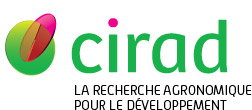Baujeu Marine, Moquet Laura, Chiroleu Frédéric, Becker-Scarpitta Antoine, Reynaud Bernard. 2025. The impact of landscape and prey on psyllophagous ladybird communities in a tropical environment. PloS One, 20 (4):e0320898, 22 p.

|
Version publiée
- Anglais
Sous licence  . .
614096.pdf Télécharger (1MB) | Prévisualisation |
Url - jeu de données - Dataverse Cirad : https://doi.org/10.18167/DVN1/WLU1UR
Liste HCERES des revues (en SHS) : oui
Thème(s) HCERES des revues (en SHS) : Psychologie-éthologie-ergonomie; Staps
Résumé : This study examines the community composition and structure of psyllophagous ladybirds in a tropical environment, focusing on their interactions with psyllids as a food resource. It investigates the effects of prey availability and landscape composition on the structure of all ladybird species associated with psyllids and on the presence and abundance of species whose life cycles depend on psyllids. Sampling was conducted in Reunion island on two psyllid-infested plant species, Leucaena leucocephala and Acacia heterophylla. Ladybirds and psyllids were regularly collected during two years using a thermal aspirator, and visual inspection was conducted at eleven sites visited monthly. In this study, 16 ladybird species were identified, and only juveniles from Coccinella septempunctata, Exochomus laeviusculus, and Olla v-nigrum were frequently present, suggesting they can complete their biological cycle on psyllids. The structure of psyllophagous ladybird communities in a tropical environment is driven by the psyllid host plant and the monthly average temperature. When studied separately, food resources or landscape variables did not affect significantly the communities. The distribution of Coccinella septempunctata is limited to high elevations, where it is recognized as an aphid-eating species, mainly in its juvenile form. Conversely, at low elevation, we encountered juvenile individuals of the generalist species Exochomus laeviusculus and the specialist species Olla v-nigrum. The presence and abundance of the generalist was positively influenced by the landscape and the presence of the specialist positively by prey abundance only.
Mots-clés Agrovoc : Exochomus, plante hôte, Coccinella septempunctata, Coccinella, Leucaena leucocephala, paysage, composition des aliments, prédation, Leucaena, Coccinellidae, cycle de développement
Mots-clés géographiques Agrovoc : France, La Réunion
Mots-clés libres : Insects, Predation, Plants, Community structure, Simpson Index, Acacia, Species diversity, Larvae
Agences de financement européennes : European Regional Development Fund, European Agricultural Fund for Rural Development
Agences de financement hors UE : Université de La Réunion
Projets sur financement : (REU) Projet Conservation et Restauration des Espèces et Milieux Endémiques
Auteurs et affiliations
- Baujeu Marine, CIRAD-BIOS-UMR PVBMT (REU) - auteur correspondant
-
Moquet Laura, CIRAD-BIOS-UMR PVBMT (REU)
 ORCID: 0000-0001-7873-2218
ORCID: 0000-0001-7873-2218
-
Chiroleu Frédéric, CIRAD-BIOS-UMR PVBMT (REU)
 ORCID: 0000-0002-4874-5357
ORCID: 0000-0002-4874-5357
-
Becker-Scarpitta Antoine, CIRAD-BIOS-UMR PVBMT (REU)
 ORCID: 0000-0001-9241-091X
ORCID: 0000-0001-9241-091X
-
Reynaud Bernard, Université de la Réunion (REU)
 ORCID: 0009-0003-6403-3944
ORCID: 0009-0003-6403-3944
Source : Cirad-Agritrop (https://agritrop.cirad.fr/614096/)
[ Page générée et mise en cache le 2025-09-29 ]




